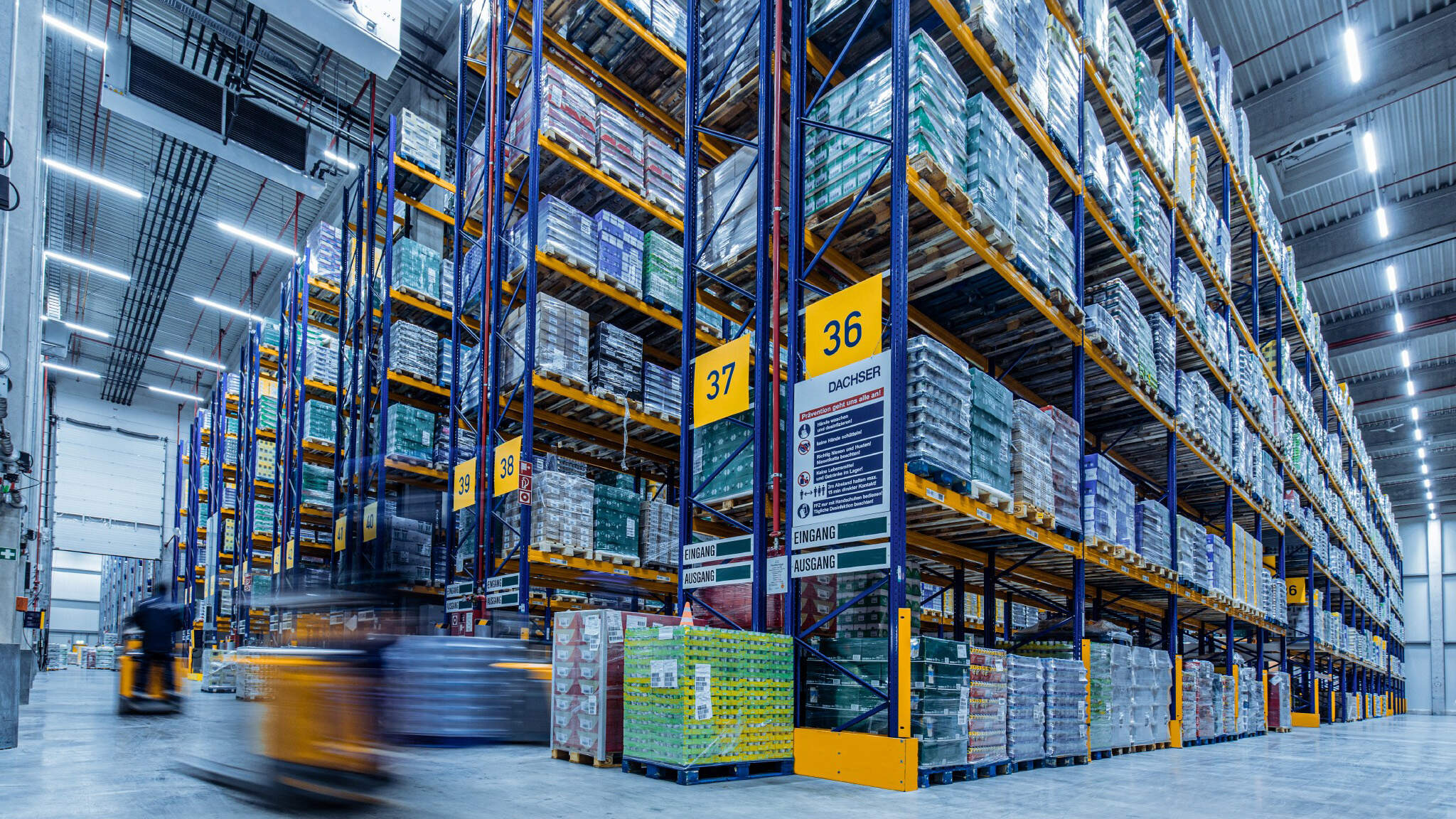Supply chain strategy and network design are critical for ensuring cost efficiency, service resilience, and growth. This article explores how leading organisations across Australia and New Zealand are rethinking their networks — and how Trace Consultants can help.
Supply Chain Strategy and Network Design – Building Resilient, Cost-Efficient Supply Chains
The past few years have shown just how fragile global and domestic supply chains can be. COVID-19 lockdowns, geopolitical tensions, and climate-related disruptions have exposed vulnerabilities across logistics networks, manufacturing bases, and sourcing models. For Australian and New Zealand organisations — from food producers and retailers to manufacturers and healthcare providers — the message is clear: supply chain strategy can no longer be reactive.
Supply chains are not just a cost centre; they are a critical enabler of competitive advantage. A well-designed network balances cost, service, and resilience. It ensures that products move efficiently, that inventory is positioned where it’s needed, and that the organisation can adapt quickly to changing market dynamics.
At the heart of this capability sits Supply Chain Strategy and Network Design — a discipline that helps organisations align operational footprints, technology, and service models to strategic objectives.
Why Supply Chain Strategy Matters More Than Ever
In Australia and New Zealand, supply chains stretch across vast geographies, rely on complex import routes, and serve consumers with rising expectations for speed, reliability, and sustainability. At the same time, cost pressures are intensifying. Transport, labour, and warehousing expenses have all increased sharply, forcing leaders to rethink how their networks are structured.
A robust supply chain strategy answers fundamental questions:
- Where should warehouses, plants, and suppliers be located to optimise cost and service?
- How can inventory and transport decisions align with business growth and sustainability goals?
- What level of resilience is worth paying for?
- How can digital technologies improve forecasting, visibility, and decision-making?
Organisations that invest in answering these questions outperform those that don’t. A strategically designed network can reduce logistics costs by 10–20 per cent, improve service levels by double digits, and significantly lower working capital requirements.
But the benefits go beyond numbers. Effective network design also strengthens brand reputation, improves customer experience, and provides a foundation for long-term growth.
What Is Supply Chain Network Design?
Supply Chain Network Design is the process of determining the optimal structure of an organisation’s supply chain — including the number, location, and roles of facilities such as factories, warehouses, and distribution centres, as well as the flow of goods between them.
It’s about designing a system that delivers the right product, to the right place, at the right time, and at the lowest total cost.
Network design involves analysing trade-offs between cost, service, and risk across the end-to-end supply chain. For example:
- Should products be shipped directly to customers or via regional DCs?
- Would outsourcing distribution to a 3PL improve performance?
- Is the current footprint aligned to customer demand and growth plans?
- What happens if a major supplier or port becomes unavailable?
Modern network design also integrates sustainability and risk management. Organisations are increasingly considering carbon impact, renewable energy access, and supply security as core design parameters alongside cost and service.
Key Elements of an Effective Supply Chain Strategy
An effective supply chain strategy is not just about moving boxes efficiently. It connects corporate strategy, operating models, and technology into a cohesive vision that drives performance. The following elements are critical.
1. Clear Strategic Objectives
Every supply chain design must start with clarity on business strategy. Are you competing on cost, service, innovation, or sustainability? A network that supports high-service retail fulfilment will look very different from one optimised for bulk industrial manufacturing.
This alignment ensures that supply chain decisions support broader organisational goals — whether it’s market expansion, service differentiation, or margin protection.
2. Understanding Demand and Customer Needs
Designing a network requires a deep understanding of customer expectations, order profiles, and demand variability. This includes analysing where demand is growing, which products drive profitability, and how customers define service quality.
For example, a business expanding into e-commerce may require smaller, faster fulfilment nodes closer to population centres. In contrast, a manufacturer serving industrial clients may prioritise large-scale efficiency and long-haul logistics.
3. Balancing Cost, Service, and Risk
Every supply chain decision involves trade-offs. Reducing warehouse count may lower costs but increase delivery times. Nearshoring manufacturing can improve resilience but at higher unit costs. The key is to model multiple scenarios and quantify the impact of each option.
Network optimisation tools help organisations visualise these trade-offs, simulating how different structures perform under various demand and disruption conditions.
4. Embedding Sustainability
Sustainability has become a strategic imperative. Governments, investors, and customers expect organisations to demonstrate measurable reductions in emissions and waste.
Supply chain design decisions — such as location selection, transport mode choice, and packaging design — have a direct impact on sustainability outcomes. Incorporating carbon modelling into network optimisation helps organisations design greener, more efficient supply chains.
5. Leveraging Technology and Data
Data is the foundation of modern network design. Advanced analytics, AI, and digital twins enable organisations to simulate network performance in real time, test different scenarios, and make evidence-based decisions.
Platforms such as Microsoft Power BI, o9 Solutions, and Anaplan, combined with low-code applications, allow teams to visualise flows, costs, and service metrics across the supply chain. The goal isn’t just to model the network once but to maintain a living model that evolves with the business.
The Network Design Process
A well-structured network design process follows a logical sequence, moving from understanding the current state to defining the future network and implementation roadmap.
Step 1: Define Scope and Objectives
The first step is to align stakeholders on objectives — whether the goal is cost reduction, service improvement, growth enablement, or sustainability. Key performance metrics (such as delivery time, freight cost, inventory turns, and carbon footprint) are agreed upon upfront.
Step 2: Map the Current Network
Next, organisations develop a detailed view of their current network. This includes facility locations, transport routes, lead times, customer demand profiles, supplier bases, and cost structures.
This “as-is” map forms the baseline for identifying inefficiencies — such as duplicated distribution centres, suboptimal freight routes, or misaligned inventory locations.
Step 3: Build the Analytical Model
Data from across the business is consolidated into a model that can simulate costs, flows, and performance. This enables the team to test scenarios such as opening or closing sites, changing transport modes, or adjusting sourcing strategies.
Step 4: Develop Scenarios and Evaluate Trade-Offs
Multiple scenarios are created and compared based on cost, service, and risk. For example, one scenario might prioritise lower transport cost through centralisation, while another prioritises resilience through decentralisation.
Each option is evaluated not only for its financial impact but also its operational feasibility and alignment with strategic goals.
Step 5: Define the Future State Network
The selected network design outlines where facilities should be located, what their roles should be, and how inventory and transport will flow between them. It also identifies technology, capability, and process changes required to support the new model.
Step 6: Build the Implementation Roadmap
The final stage converts the design into a practical roadmap, detailing the sequence of initiatives, required investment, and expected benefits. This includes site rationalisation plans, system upgrades, procurement activities, and change-management programs.
Common Triggers for a Network Review
There are several events that prompt organisations to review their supply chain strategy and network design.
Business Growth or Expansion
Rapid growth or entry into new markets often requires rethinking how the network supports additional volume and geographic reach.
Cost Pressures
When logistics or warehousing costs increase disproportionately, a network review can identify opportunities to consolidate sites, renegotiate 3PL contracts, or optimise routes.
Mergers and Acquisitions
Integrating multiple networks following a merger often reveals redundancies or inefficiencies that can be rationalised.
Service Challenges
Rising stockouts, delivery delays, or customer complaints may indicate that the network structure no longer fits demand patterns.
Sustainability Goals
Decarbonisation targets frequently require re-evaluating transport modes, route distances, and energy sources within the supply chain.
Technology Transformation
The introduction of new systems — such as ERP, WMS, or transport optimisation software — presents an opportunity to redesign processes and data flows holistically.
The Role of Resilience in Modern Network Design
In the past, network design focused primarily on cost and service. Today, resilience has become equally important. The pandemic, port disruptions, and extreme weather events highlighted the risks of highly centralised, cost-optimised networks.
Resilience can be built into design through several levers:
- Dual sourcing and supplier diversification
- Flexible production and packaging capabilities
- Regionalised distribution footprints
- Inventory buffers at critical nodes
- Real-time visibility and contingency planning
The challenge for leaders is to balance resilience with efficiency. Building redundancy everywhere is expensive, but strategic flexibility — such as multi-modal transport options or secondary fulfilment nodes — can make the difference between surviving and thriving during disruptions.
Sustainability and the Future of Network Design
Sustainability is no longer a “nice to have”; it’s integral to how organisations design their supply chains. Carbon emissions from transport, energy use in warehouses, and waste from packaging are under increasing scrutiny from regulators, investors, and consumers.
Modern network design incorporates environmental performance as a core design metric. Organisations are modelling their carbon footprint alongside cost and service — measuring emissions across modes, distances, and product types.
In Australia and New Zealand, this is particularly relevant as supply chains often rely on long-haul road transport. Shifting to rail where feasible, using renewable energy in distribution centres, and optimising route density can all significantly reduce emissions.
Sustainable supply chain design also improves resilience by reducing reliance on volatile fuel markets and building stakeholder trust.
How Trace Consultants Can Help
At Trace Consultants, we help organisations across Australia and New Zealand design supply chains that are efficient, resilient, and future-ready.
Our team combines deep expertise in supply chain strategy, network modelling, procurement, and digital enablement with a pragmatic understanding of how to deliver real-world outcomes.
We support clients through every stage of the journey — from strategy development to implementation.
Our Approach
1. Current State Review
We begin by understanding your existing network — facilities, costs, service levels, and demand flows. Using data-driven analysis, we identify pain points, inefficiencies, and risks.
2. Strategy Definition and Scenarios
We work with your leadership team to define objectives and model multiple network scenarios, testing how different structures perform across cost, service, and resilience.
3. Technology-Enabled Modelling
Using advanced analytics and low-code applications, we build tailored models that integrate your data across systems. This provides a clear, visual understanding of how each scenario affects cost, service, and sustainability.
4. Implementation Roadmap
We translate insights into a practical roadmap — outlining where to invest, what to change, and how to execute. Our focus is on quick wins and achievable benefits, supported by realistic implementation planning.
5. Ongoing Optimisation
Supply chain strategy is never static. We help organisations establish processes and tools to continuously review their networks as demand, costs, and constraints evolve.
What Makes Trace Consultants Different
Our approach is pragmatic and outcome-focused. We combine strategy with execution — ensuring that network design decisions are grounded in operational reality.
Because we are independent and technology-agnostic, our advice is unbiased. We recommend the solutions that best fit your objectives, rather than selling a particular system or provider.
Our consultants have delivered network design and supply chain strategy projects across sectors including retail, FMCG, healthcare, defence, and manufacturing. We bring both analytical rigour and practical experience in executing change — from warehouse transitions to procurement and digital transformation.
Most importantly, we partner closely with our clients’ teams to build internal capability. The goal is not just to deliver a report but to enable your organisation to manage and evolve its network confidently over time.
The Path Forward
Designing and optimising a supply chain network is no longer a one-off exercise — it’s an ongoing strategic capability. Market dynamics, cost structures, and sustainability expectations are constantly shifting. Organisations that continuously refine their supply chain strategy will remain more agile, resilient, and competitive.
For leaders across Australia and New Zealand, the question is not whether to review the network, but when and how often. The most successful organisations treat network design as a strategic rhythm — reviewing their footprint, flows, and partners regularly to stay aligned with business growth and market conditions.
Supply Chain Strategy and Network Design are critical levers for competitive advantage. They determine how effectively an organisation can serve its customers, manage costs, and respond to disruption.
By integrating strategy, data, and design, organisations can build supply chains that are not only cost-efficient but also resilient and sustainable.
For businesses across Australia and New Zealand, now is the time to take a fresh look at the supply chain. The world has changed — and so must the way we design the networks that keep it moving.
Trace Consultants is here to help. Our team brings the experience, tools, and insight to design smarter, more adaptive supply chains that deliver measurable business results — today and into the future.










